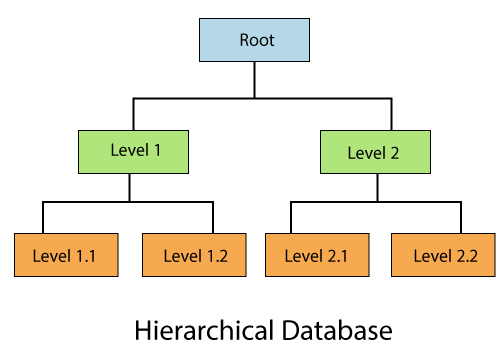Types of Databases
Relational Database
This database is based on the relational data model, which stores data in the form of rows(tuple) and columns(attributes), and together forms a table(relation). A relational database uses SQL for storing, manipulating, as well as maintaining the data. E.F. Codd invented the database in 1970. Each table in the database carries a key that makes the data unique from others. Examples of Relational databases are MySQL, Microsoft SQL Server, Oracle, etc.
The reason why still RDBMS is used for financial organizations is due to normalization and ACID property stuf(Transaction Control Langauge).
Properties of Relational Database
There are the following four commonly known properties of a relational model known as ACID properties, where:
Atomicity: This ensures the data operation will be complete either with success or with failure. It follows the 'all or nothing strategy. For example, a transaction will either be committed or will abort.
Consistency: If we perform any operation over the data, its value before and after the operation should be preserved. For example, the account balance before and after the transaction should be correct, i.e., it should remain conserved.
Isolation: There can be concurrent users for accessing data at the same time from the database. Thus, isolation between the data should remain isolated. For example, when multiple transactions occur at the same time, one transaction effect should not be visible to the other transactions in the database.
Durability: It ensures that once it completes the operation and commits the data, data changes should remain permanent.
Object-oriented Databases
The type of database that uses the object-based data model approach for storing data in the database system. The data is represented and stored as objects which are similar to the objects used in the object-oriented programming language.
Hierarchical Databases
It is the type of database that stores data in the form of parent-children relationship nodes. Here, it organizes data in a tree-like structure.
Data get stored in the form of records that are connected via links. Each child record in the tree will contain only one parent. On the other hand, each parent record can have multiple child records.

Network Databases
It is the database that typically follows the network data model. Here, the representation of data is in the form of nodes connected via links between them. Unlike the hierarchical database, it allows each record to have multiple children and parent nodes to form a generalized graph structure.
In simple words, it's like many to many relationship possible databases.
NoSQL Database
Not Only SQL is a type of database that is used for storing a wide range of data sets. It is not a relational database as it stores data not only in tabular form but in several different ways. It came into existence when the demand for building modern applications increased. Thus, NoSQL presented a wide variety of database technologies in response to the demands. We can further divide a NoSQL database into the following four types:
- Key-value storage: It is the simplest type of database storage where it stores every single item as a key (or attribute name) holding its value, together.
- Document-oriented Database: A type of database used to store data as a JSON-like documents. It helps developers in storing data by using the same document-model format as used in the application code.
- Graph Databases: It is used for storing vast amounts of data in a graph-like structure. Most commonly, social networking websites use the graph database.
- Wide-column stores: It is similar to the data represented in relational databases. Here, data is stored in large columns together, instead of storing in rows.
Comments
Post a Comment